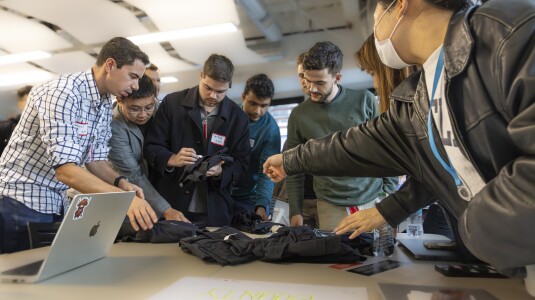Learning advanced analytic methods and programming languages can give economists an important foundation when it comes to data science and computer modeling. This past summer, students from two economics schools in Africa took part in a unique workshop aimed at building familiarity with key computational tools and concepts. Amazon supported the Summer Course in Quantitative Economics 2022, which the nonprofit QuantEcon created in partnership with the African School of Economics and the Institute of Statistics and Applied Economics (ENSEA).

Over the course of two weeks, students watched pre-recorded lectures and collaborated on assignments related to linear algebra, optimization, introductory Python, and high-performance computing. Nobel Prize-winning economist Thomas Sargent, QuantEcon's cofounder and an economics professor at New York University, was the course's lead instructor. Sargent founded QuantEcon to improve computational tools for quantitative economics.
"This program is very important for the young economists and statisticians we train, as it is necessary for them to be informed about state-of-the-art practices and usage in the field of expertise," said Nathaniel Gbenro, a teacher-researcher at ENSEA.

QuantEcon found a willing partner at Amazon in Serge Adjognon, a Core AI senior economist, who helped with course planning and logistics. Adjognon, who grew up in Benin, had been talking with Pai-Ling Yin, senior manager of research science in Core AI, about his desire to enhance career access for people in Africa.
"I understand the extent to which a lack of information and the lack of a network could be binding constraints on folks in reaching their full potential," he said. "There are a lot of smart people who just don't have the same opportunity as I did."
About 150 master's and doctoral students in Benin and the Ivory Coast joined the ten-day, ten-session course, which Amazon helped fund. Teaching and materials were provided online, and students were encouraged to form study groups.
The program's goal: provide students with quantitative economics skills that are in high demand in the workplace, ENSEA's Gbenro said. "We hope that students emerge from the courses with skills that allow them to bridge the gap between economic modeling and the use of analytical methods in Python."

Anselme M. Houessigbede, a first-year PhD student at ENSEA, said the course was a great experience that helped him better understand how to use Python in his field.
"I knew the strength of Python in massive data analysis," he said, "but the application to economic modeling was unfamiliar to me."
Houessigbede liked that his group had the flexibility to follow the sessions at their own pace over the course of two weeks. The course had a double advantage, he said: "First, I get used to the mathematical formalism behind the economic models already established in scientific papers, and [then] the resolution of these models with Python."
Adjognon said early feedback on the workshop has been positive. "In the first place, it creates exposure for these students to a high caliber economist like Tom Sargent," he said. "And then no matter how much or how little students learn, just the increased aspiration that this could generate is very important."
QuantEcon is planning to repeat the workshop in India, a prospect that Adjognon welcomes. His goal: build connections between those in lower-income countries who are seeking career opportunities and hiring managers at Amazon who are seeking talent.
"I would like to see this become a recurring program that happens yearly and involves more institutions across the continent," he said.




